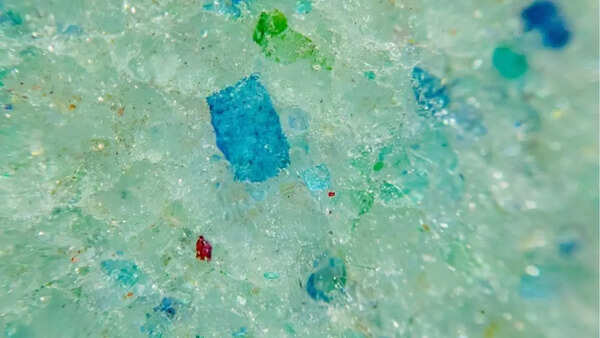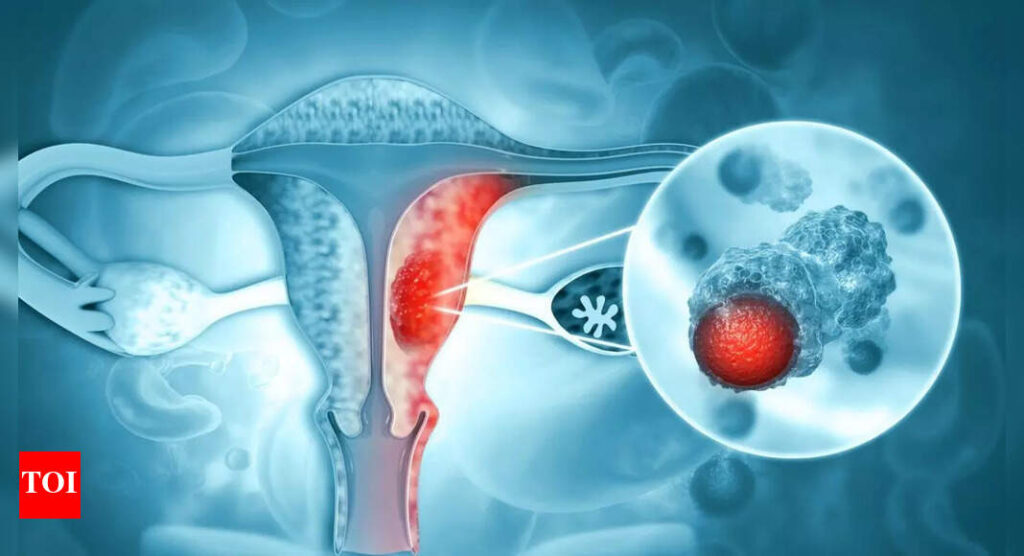Microplastics aren’t just affecting men’s fertility, women are at risk too! For the first time, scientists have discovered tiny plastic particles in human ovarian follicular fluid, raising serious concerns about their impact on female fertility.
The growing impact of plastic pollution on the human body is becoming increasingly evident, as tiny plastic particles, even thinner than a hair strand, silently infiltrate the brain, heart, lungs, and other vital organs, affecting their function.
In a study published in Ecotoxicology and Environmental Safety, researchers looked for microplastics in the follicular fluid of 18 women going through assisted reproductive treatment at a fertility clinic in Salerno, Italy, and found them in 14 samples. Here’s the alarming impact of microplastics in human ovaries. Let’s first understand what follicular fluid is.
What is follicular fluid?
Luigi Montano, the lead author of the study and a researcher at the University of Rome says the findings are ‘very alarming’, and also crucial in terms of understanding the impact of microplastic on women’s reproductive systems.
Montano’s current findings are part of a larger project that also found microplastics in human urine and semen, and examined the impact on male fertility. The researcher said microplastics could be behind the declining sperm counts and a drop in sperm quality.

Impact of microplastic on women’s health
While men are more affected by the toxic effects of microplastics, the impact on women is no less. Animal research has linked microplastics to ovarian dysfunction and health problems, like reduced oocyte maturation, and a lower capacity for fertilization. It can also lead to alterations to ovarian tissue.
Montano said that bisphenol, phthalates, Pfas and other highly toxic chemicals that use microplastics as a “Trojan horse” to get into the body, and into the ovaries, are ‘very dangerous’. They can disrupt hormones and harm women’s reproductive health.
1. Reproductive health risks
Microplastics have been detected in human ovarian follicular fluid for the first time, raising concerns about their potential impact on female fertility. These particles could interfere with the development and maturation of eggs, affecting reproductive health and hormone levels.
2. Hormonal disruption
Microplastics contain endocrine-disrupting chemicals that can mimic or interfere with the body’s hormones. In women, this can lead to imbalances in estrogen, progesterone, and other key hormones, potentially contributing to conditions like polycystic ovary syndrome (PCOS), thyroid disorders, and irregular menstrual cycles.
3. Increased risk of inflammatory diseases
Microplastics, when absorbed into the bloodstream, may trigger inflammation throughout the body. Chronic inflammation is linked to a variety of health issues, including autoimmune diseases, cardiovascular problems, and even certain cancers. Women may be more vulnerable due to differences in immune system responses.

4. Impact on pregnancy and fetal development
Exposure to microplastics during pregnancy may have potential risks for both maternal and fetal health. The particles could cross the placenta, affecting fetal development and leading to complications such as low birth weight or developmental delays.
5. Respiratory and digestive issues
Inhalation and ingestion of microplastics can cause respiratory issues, such as irritation and inflammation in the lungs. Women, particularly those in urban environments, are at risk of developing chronic conditions like asthma or bronchitis due to continuous exposure. Similarly, ingestion may disrupt digestive health, leading to gastrointestinal discomfort or long-term issues like gut inflammation.
Microplastics and male fertility
Microplastics are formed due to breaking down or decomposition of plastic that leads to formation of numerous microplastics (MPs), less than 5 mm in diameter. They enter the soil, and ocean. They become part of the air we breathe, the water we drink, and the food we eat.
Around 15% of couples worldwide face infertility, with nearly half of the cases linked to male factors. Male semen quality has significantly declined over the years. From 1940 to 1990, sperm concentration dropped from 113 million/ml to 66 million/ml. The World Health Organization (WHO) has also observed this decline, reducing the normal semen concentration value from 60 million/ml in 1980 to 15 million/ml in 2010, with little change in the latest 2021 guidelines.
This decline in sperm quality over the past 80 years coincides with the rise of plastic pollution. While other factors like obesity, diet, and environmental toxins may also play a role, plastic pollution remains a major persistent threat to male fertility.


